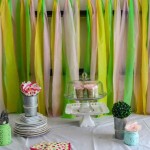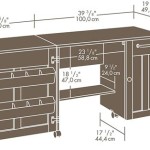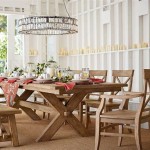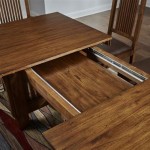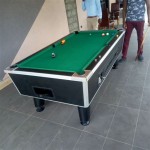Pottery Barn Project Table: A Comprehensive Overview
The Pottery Barn project table represents a versatile furniture piece designed to cater to a multitude of activities, ranging from crafting and homework to home office tasks and even dining. It is marketed towards individuals and families seeking a durable and aesthetically pleasing surface that can adapt to diverse needs within a living space. The project table distinguishes itself from standard tables through its emphasis on storage, functional design, and a higher level of craftsmanship, aligning with Pottery Barn's brand image of quality and style.
This article seeks to provide a comprehensive overview of the Pottery Barn project table, covering its key features, materials and construction, design variations, intended uses, and factors to consider when evaluating its suitability for specific environments and needs. The examination aims to present an objective assessment of the table's advantages and potential limitations, enabling readers to make informed decisions regarding its purchase.
Key Feature 1: Storage and Organization
One of the defining characteristics of the Pottery Barn project table is its integrated storage solutions. Unlike a standard table, the project table typically incorporates drawers, shelves, and sometimes even cabinets directly built into its frame. This built-in storage is intended to minimize clutter and provide readily accessible space for tools, materials, and other items relevant to the intended task. The configuration of storage elements can vary considerably depending on the specific model of project table. Some models may feature several small drawers designed for organizing small items such as pens, paper clips, and crafting supplies. Others might include larger drawers suitable for storing bulkier materials like fabrics, paints, or books. Shelves, either open or enclosed within cabinets, often provide additional storage space for items that need to be easily accessed or displayed.
The design of the storage components is crucial for optimizing functionality. Drawers are often equipped with metal glides for smooth opening and closing, and sometimes feature dividers to further compartmentalize items. Shelves may be adjustable to accommodate objects of varying heights. The location of the storage elements is also strategically considered. Drawers and shelves located within easy reach of the user ensure that tools and materials are readily available without having to leave the workspace. In essence, the integrated storage of the Pottery Barn project table aims to create a more efficient and organized workspace, minimizing distractions and maximizing productivity.
The materials used for the storage components are generally consistent with the overall construction of the table. Solid wood, wood veneers, and engineered wood products are commonly employed. The choice of materials contributes to the durability and aesthetic appeal of the storage elements, ensuring that they can withstand regular use and complement the overall design of the table. The finish applied to the storage components is also consistent with the table's overall finish, creating a cohesive and visually appealing piece of furniture.
Key Feature 2: Materials and Construction
The quality of materials and the method of construction significantly influence the durability and longevity of the Pottery Barn project table. Pottery Barn typically utilizes a combination of solid wood, wood veneers, and engineered wood products in the construction of its furniture, with the specific materials varying depending on the price point and design of the particular model. Solid wood is often used for key structural elements such as the table legs and frame, providing strength and stability. Wood veneers, thin layers of real wood adhered to a substrate, are commonly used for the table surface and side panels, offering the aesthetic appeal of solid wood at a more affordable price. Engineered wood products, such as plywood and MDF (medium-density fiberboard), are frequently employed for interior components and areas where stability and resistance to warping are essential. These materials are selected for their strength, stability, and ability to accept finishes.
The construction techniques used in assembling the Pottery Barn project table are designed to ensure long-lasting durability. Joinery methods such as mortise and tenon, dovetail, and screws are commonly employed to securely connect the various components of the table. Mortise and tenon joints, in which a projecting tenon is inserted into a corresponding mortise, provide exceptional strength and resistance to stress. Dovetail joints, characterized by interlocking, wedge-shaped projections, are often used in drawer construction to create strong and aesthetically pleasing joints. Screws are used to reinforce joints and secure panels, ensuring the overall stability of the table. Attention to detail in the construction process, such as the proper alignment of components and the even application of finishes, contributes to the overall quality and aesthetic appeal of the project table.
The finishes applied to the Pottery Barn project table are designed to protect the wood and enhance its natural beauty. A variety of finishes are available, including stains, paints, and sealants, each offering different aesthetic and protective properties. Stains penetrate the wood to highlight its grain and add color. Paints provide a solid, opaque finish that can be customized to match a variety of decor styles. Sealants, such as polyurethane, protect the wood from moisture, scratches, and stains, ensuring its long-term durability. The application of these finishes is typically done in multiple layers, with sanding and polishing between each layer to achieve a smooth, even, and durable surface. The choice of finishes and the care with which they are applied are crucial for ensuring that the project table can withstand regular use and maintain its aesthetic appeal over time.
Key Feature 3: Design Variations and Intended Uses
The Pottery Barn project table is available in a wide range of design variations to cater to different aesthetic preferences and functional requirements. These variations encompass differences in size, shape, style, and storage configuration. Regarding size, project tables are available in various lengths and widths to accommodate different workspace requirements. Smaller tables may be suitable for individual use in compact spaces, while larger tables can provide ample workspace for multiple users or larger projects. The shape of the table can also vary, with rectangular, square, and even L-shaped options available to suit different room layouts. The style of the project table can range from traditional to modern, with details such as turned legs, decorative moldings, and sleek, minimalist lines influencing the overall aesthetic. The storage configuration, as previously discussed, is another key area of variation, with different models offering a variety of drawer, shelf, and cabinet arrangements.
The intended uses of the Pottery Barn project table are diverse, reflecting its versatility as a multi-functional furniture piece. One common application is as a crafting table, providing a dedicated workspace for hobbies such as sewing, painting, scrapbooking, and model building. The integrated storage is particularly useful for organizing crafting supplies such as paints, brushes, fabric, and tools. Another intended use is as a homework station for students, offering a spacious surface for spreading out books and papers, as well as storage for school supplies. The table can also serve as a home office desk, providing a comfortable and organized workspace for computer work, writing, and other tasks. The durable construction and ample storage make it suitable for use in home offices that require a combination of functionality and aesthetic appeal. Furthermore, some models of the Pottery Barn project table can even function as a dining table, particularly in smaller spaces where a multi-functional furniture piece is desirable. The durable surface and sturdy construction make it suitable for everyday dining use.
The design variations of the Pottery Barn project table are often tailored to specific intended uses. For instance, a crafting table may feature a large, easily cleanable surface and specialized storage compartments for crafting supplies. A homework station may include a built-in hutch or shelving unit to provide additional storage for books and papers. A home office desk may incorporate features such as a keyboard tray and cable management system. The specific design features of each model are carefully considered to optimize its functionality for its intended use. The versatility of the Pottery Barn project table makes it a suitable choice for a variety of environments, from homes and apartments to studios and workshops. Its ability to adapt to different needs and styles contributes to its enduring popularity as a functional and aesthetically pleasing furniture piece. The range of design options also allows consumers to select a table that not only meets their functional requirements but also aligns with their personal aesthetic preferences and complements the overall decor of their living space.

Bedford Project Table Pottery Barn

Pottery Barn Bedford Project Table Set Copycatchic

Bedford Project Table Pottery Barn

Pottery Barn Bedford Project Table Set Copycatchic

Pottery Barn Project Table Look 4 Less

Pottery Barn Bedford 55 Project Table Set Bar Furniture

Aubrey Project Table Pottery Barn

Aubrey Project Table Pottery Barn

Bedford Project Table Home Furniture

Standing Project Table Pottery Barn Teen
Related Posts


